Hike through a stunning canyon to some of the most impressive rock art in North America
Distance: 7.75 miles roundtrip
Type: out and back
Difficulty: moderate with 800′ elevation gain and some hiking in deep sand
Best season: spring and fall
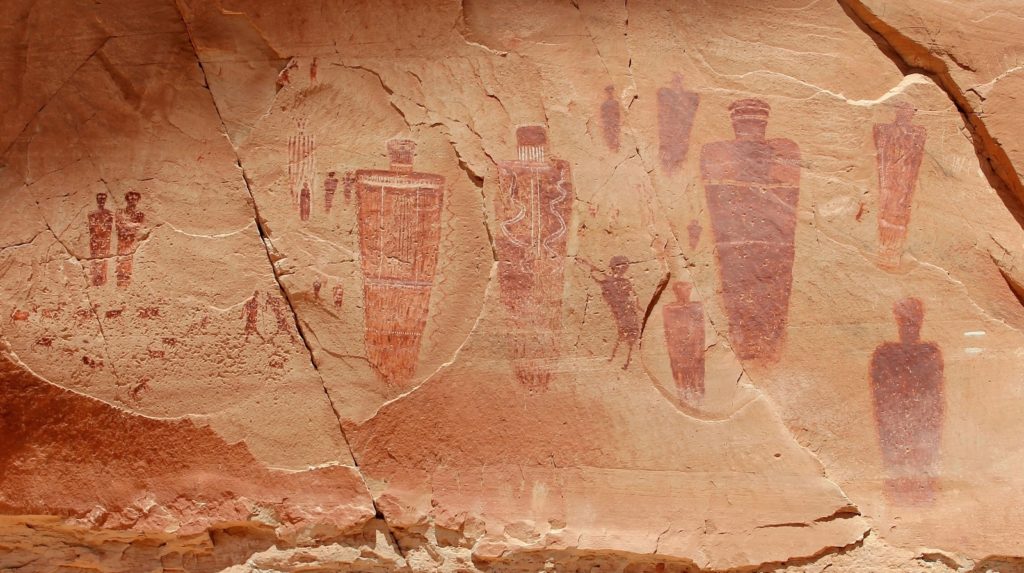
Prior to starting Evans Outdoor Adventures in 2015, we visited some incredible sites across the West. As time permits, I’m going back into the photos vault to share some of those memorable adventures with you. In today’s post, I’ll be sharing our April 2011 hike to the exceptional rock art in Horseshoe Canyon.
Horseshoe Canyon (formerly Barrier Canyon) is a remote unit of Canyonlands National Park in southern Utah. Horseshoe contains some of the most significant rock art in North America. The Great Gallery, the most impressive of the panels, includes well-preserved, life-sized figures with intricate designs. The seven mile hike into the canyon passes underneath towering sandstone walls while following an intermittent stream.
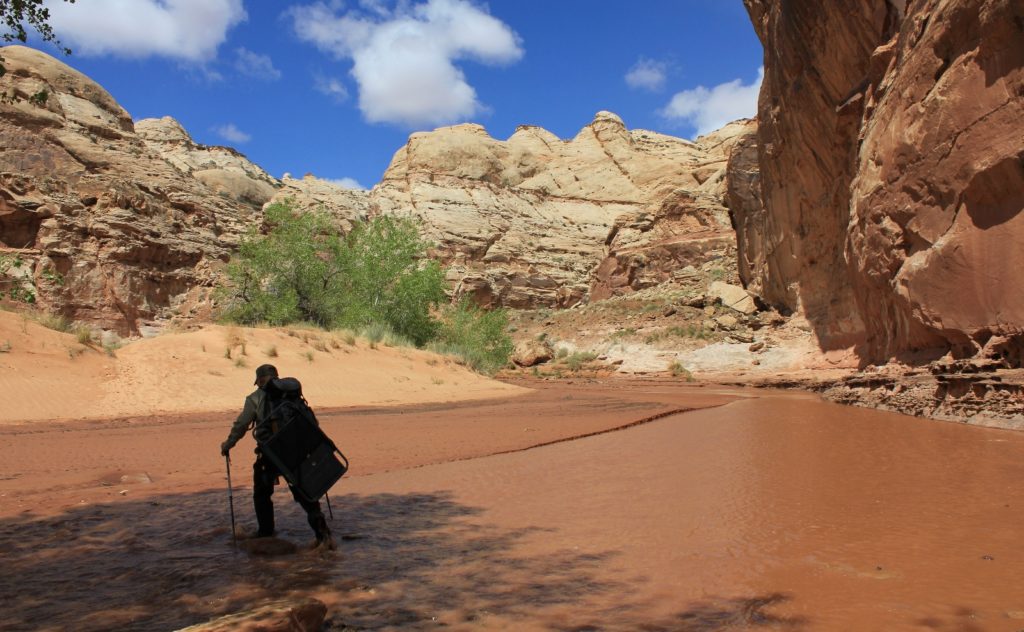
Canyonlands National Park website provides visitors with a brief history of the canyon (Click here for park brochure with map). The archeology of Horseshoe Canyon spans thousands of years of human history. Artifacts recovered from sites in this area date back as early as 9000-7000 B.C., when Paleoindians hunted large mammals like mastodons and mammoths across the southwest. The rock art found here is believed to date from 2000 B.C. to 500 A.D.
Hundreds of years after the prehistoric artists left the area, outlaws like Butch Cassidy took refuge in the confusing network of area canyons. In the early 1900s, ranchers built stock trails into Horseshoe Canyon so livestock could reach water and feed in the canyon bottom. Prospectors explored the area in the mid-1900s. Though they searched for oil and other minerals, no successful wells or mines were ever established around Horseshoe.
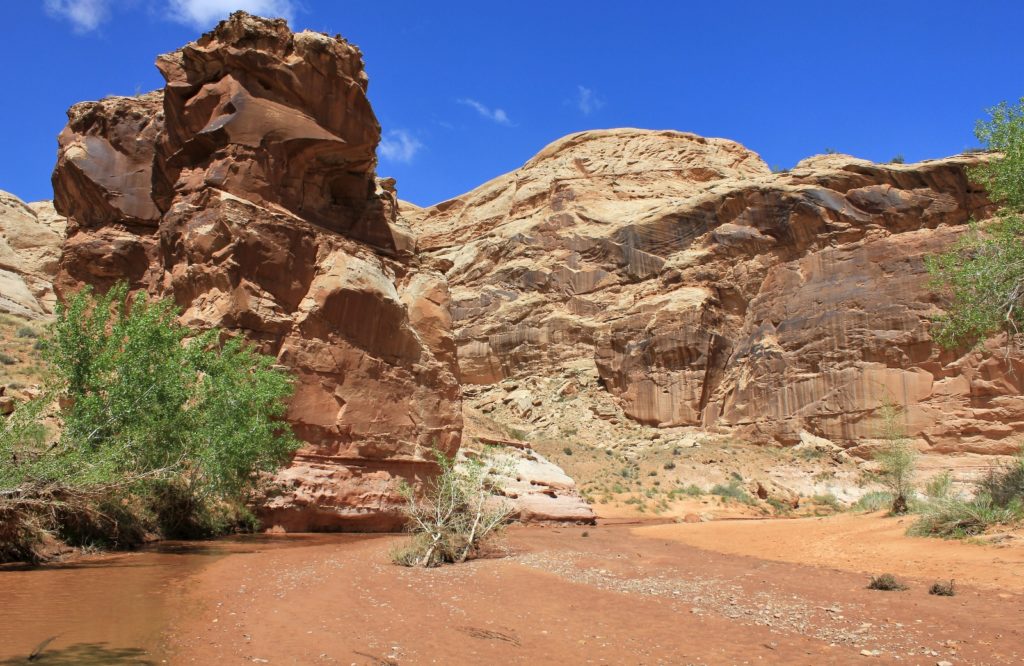
Horseshoe Canyon Trailhead is located an hour (under good conditions) down a dirt road. The area experienced heavy rains the two nights before our visit and we were warned that the road could be impassable. We proceeded with caution and found the road in good condition in most places. The trailhead is perched high above the canyon floor in an otherwise desolate looking area. Sitting in the parking lot, it is hard to imagine the history and beauty to be found in the canyon below.
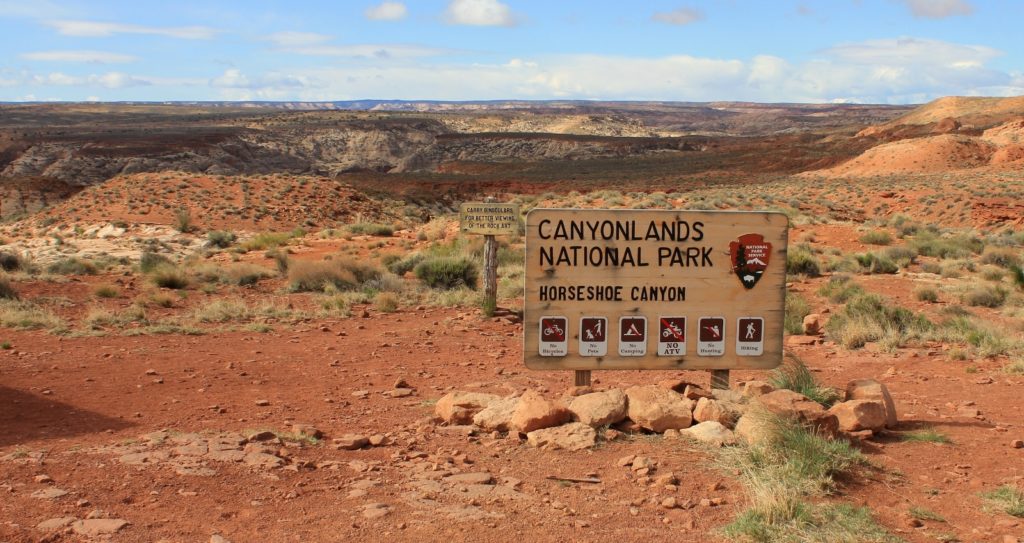
The trail starts by descending 750 feet into the canyon along an old mining road of slickrock and loose sand. Along the way, we passed an impressive dinosaur print in the rock.
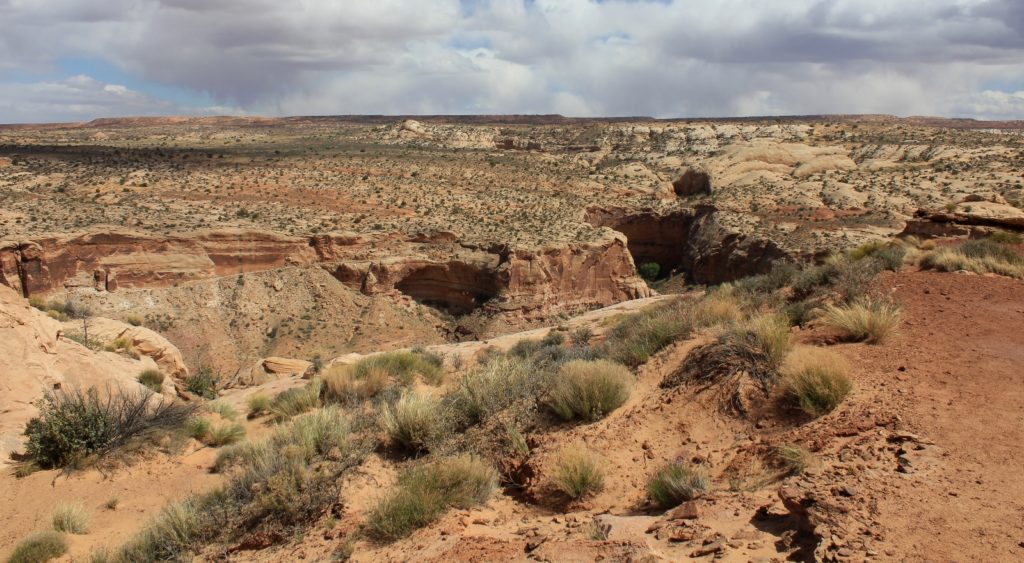
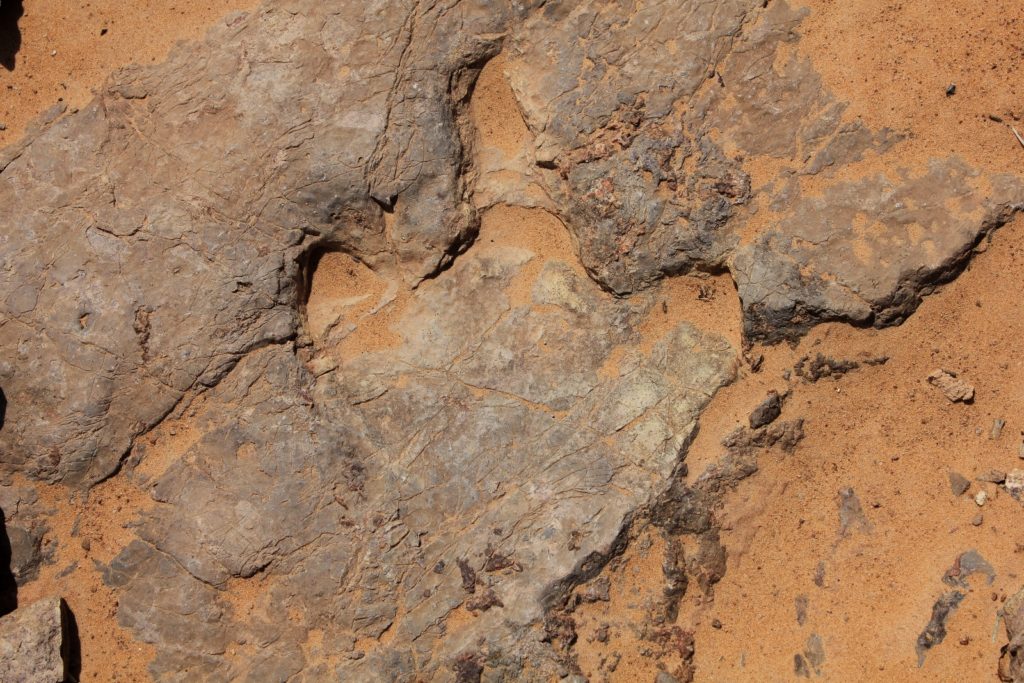
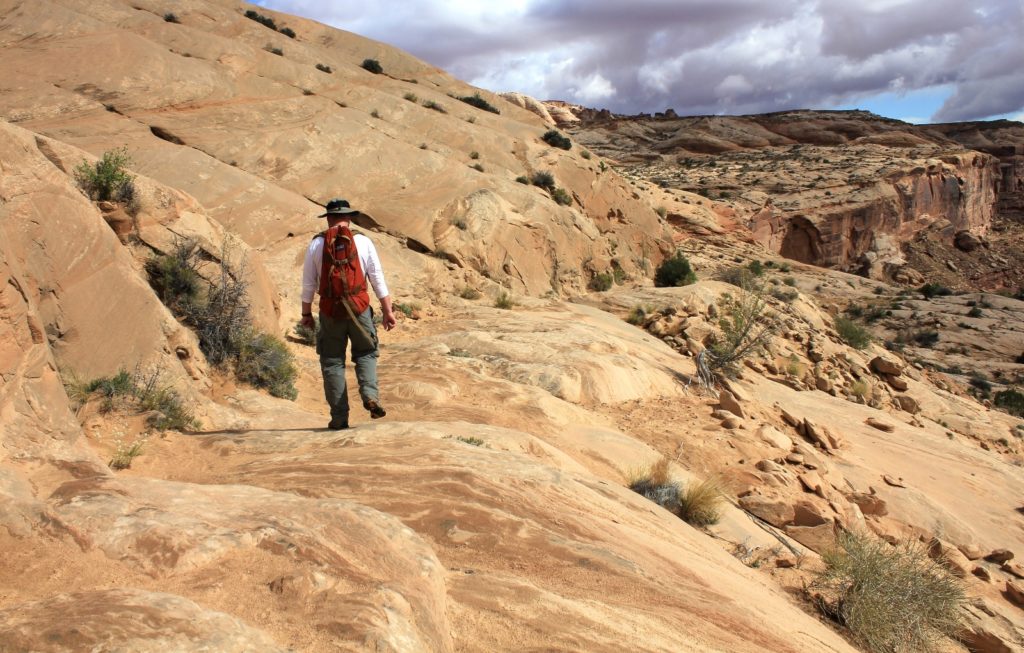
Half way into the canyon, we met up with National Park volunteers Blaine and Lynn. They were kind enough to let us join them for the rest of the hike to The Great Gallery. This knowledgeable and kind couple had been volunteering in the canyon for two weeks each year for seven years. Each day, they would hike to The Great Gallery and give tours to visitors who adventure into the canyon. Their presence helps to deter vandalism of the precious sites.
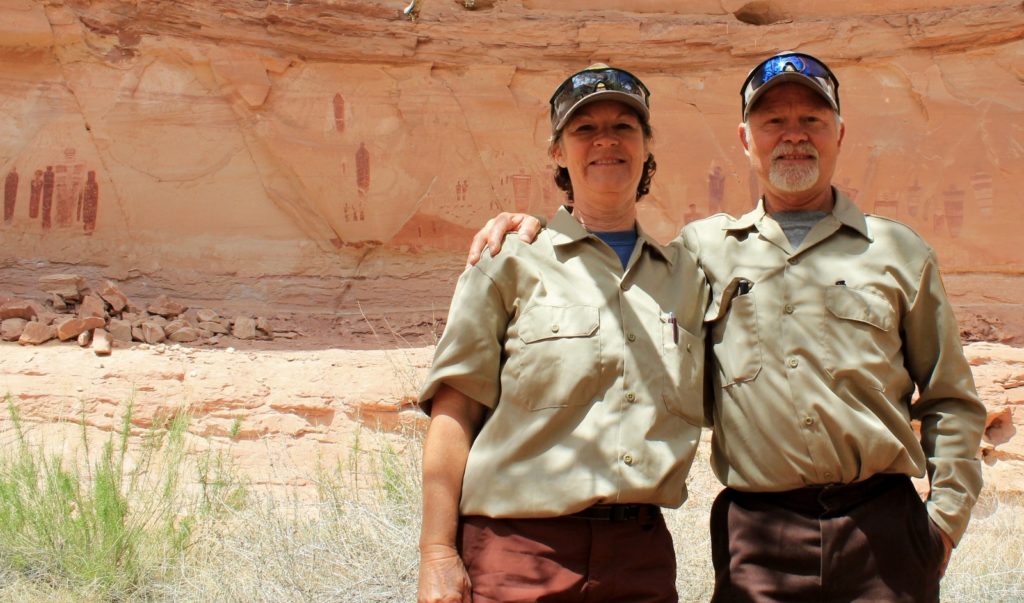
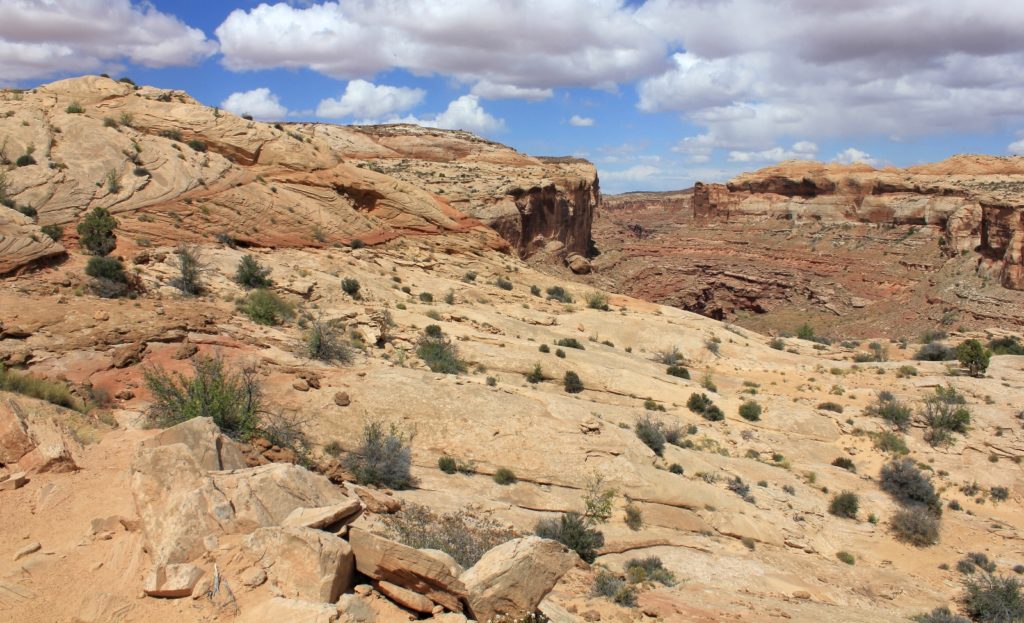
When the bottom of the canyon came into view, Blaine exclaimed “we’re in for an interesting day!” We looked down and saw a pretty little stream flowing…all the trail guides I had read talked about hiking through the deep sand in the dry canyon—I was not expecting flowing water. In fact, in their many years of hiking this canyon, Blaine and Lynn had never seen water like this. Two days of heavy rains had transformed the desert.

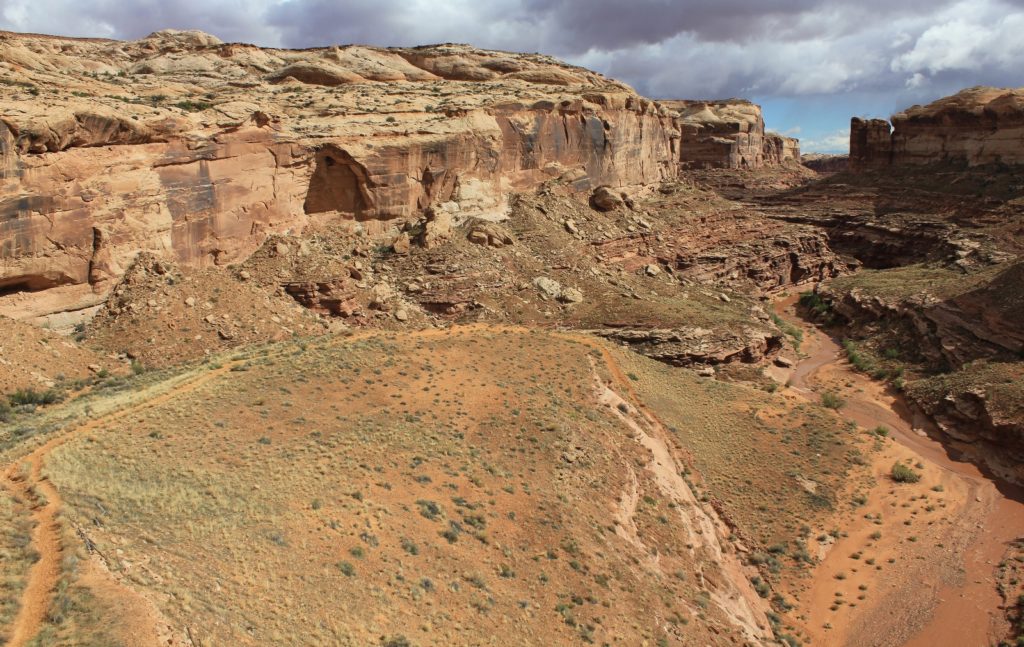
Arriving at the canyon bottom, we immediately needed to cross the stream. Blaine searched up and down canyon looking for a way to cross dry footed. “How many times will we need to cross this today,” I asked Blaine. “Lots,” he replied. We immediately gave up on dry feet and waded our way across to the other side. By the end of the day, we made a total of 34 stream crossings. None of the crossings were deep or difficult, but keeping dry feet would have been impossible. Having to navigate back and forth across the stream added a little distance to our hike but it also added to the fun.
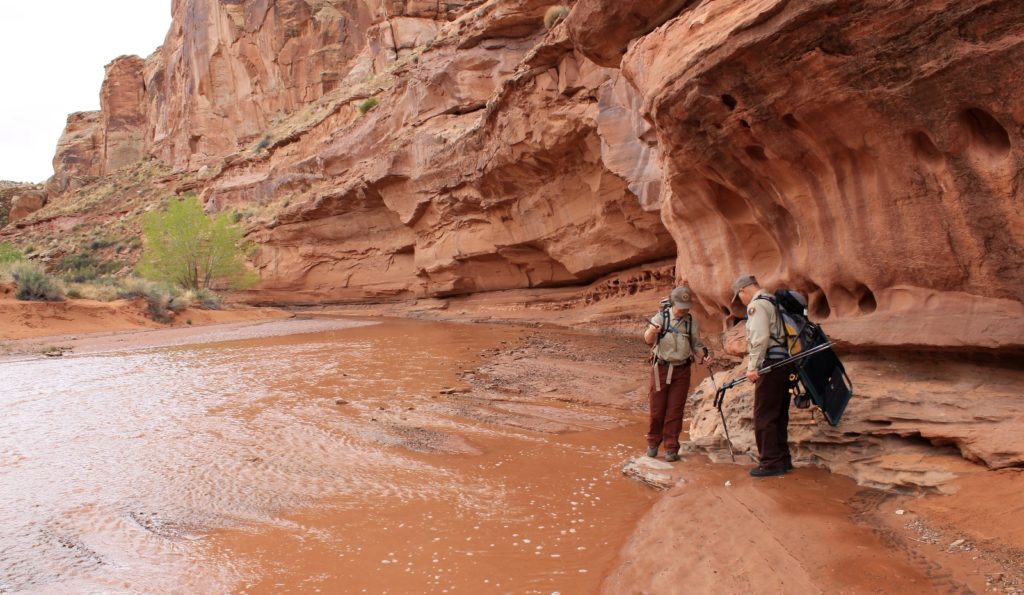
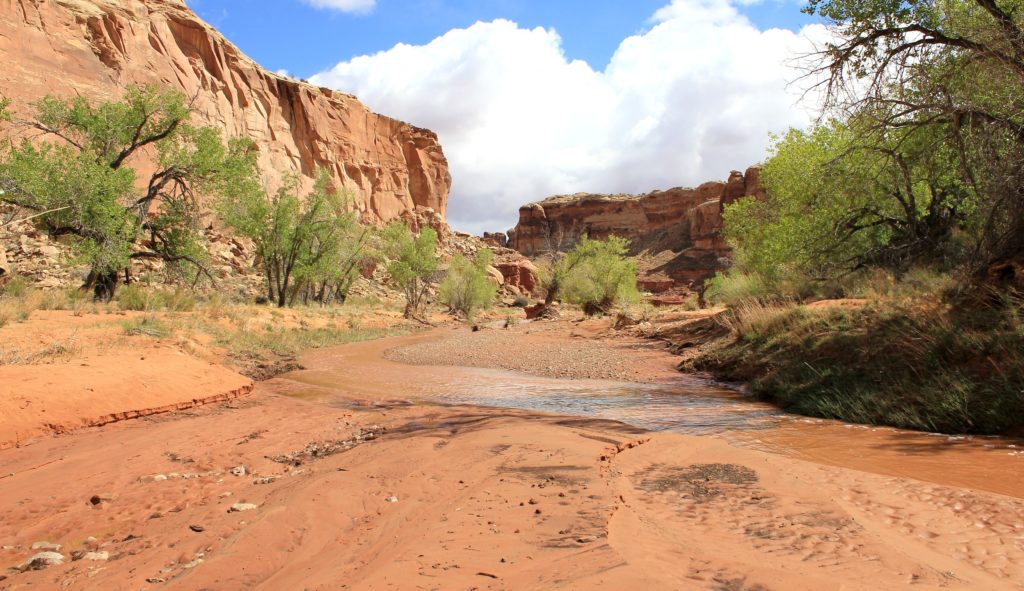
High Gallery is the first of the four major rock art panels in Horseshoe Canyon. The figures are quite large and are located high on the canyon wall.
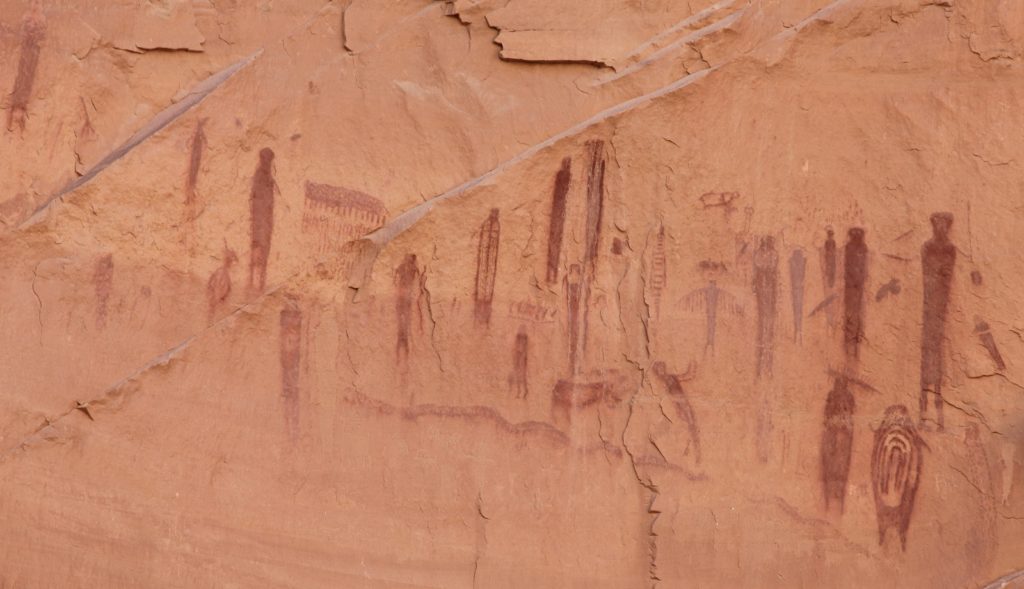
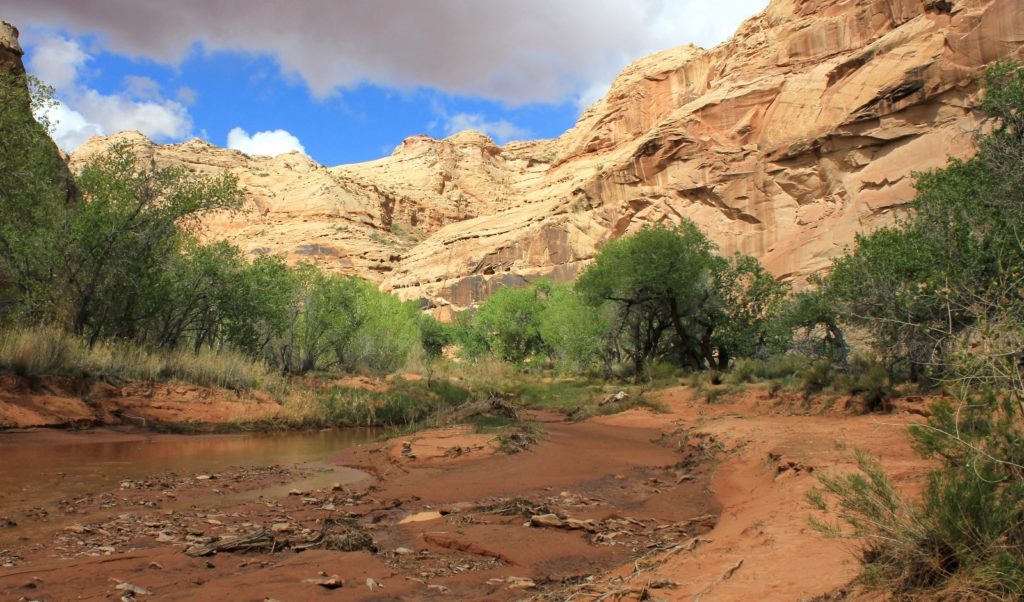
Horseshoe Shelter Panel was just a short distance up the trail and on the opposite side of the canyon. There was lot to see and Lynn was so nice to show me all the treasures the site holds.
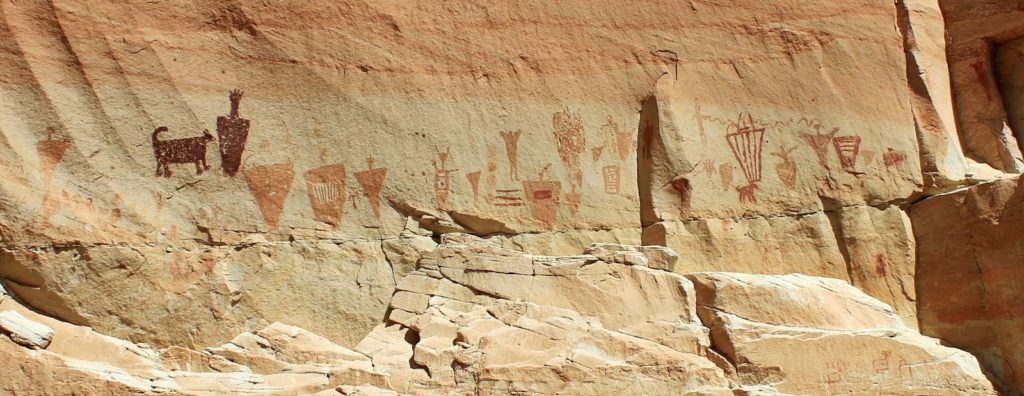
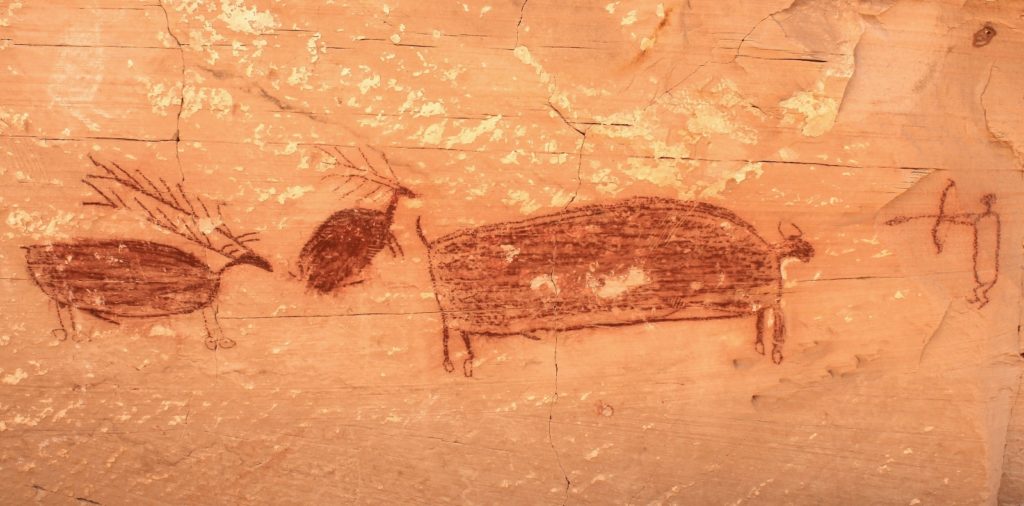
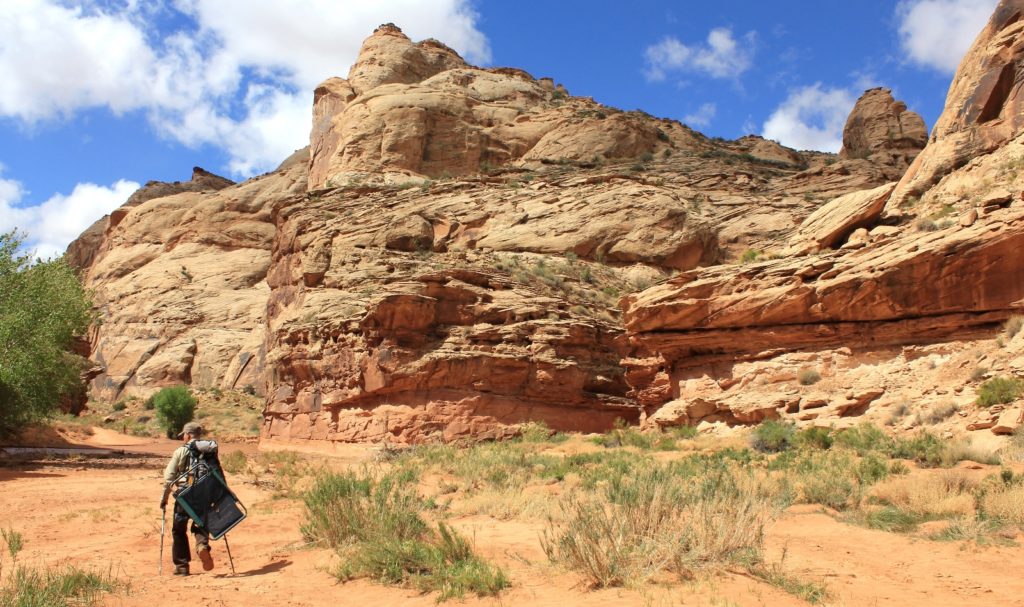
The Alcove is the third rock art panel in Horseshoe Canyon. The pictographs are just above the ground and well within the reach of visitors which has sadly lead to increased vandalism at this site. Still, the panel is located in a beautiful alcove making this one of the more scenic sections of trail.
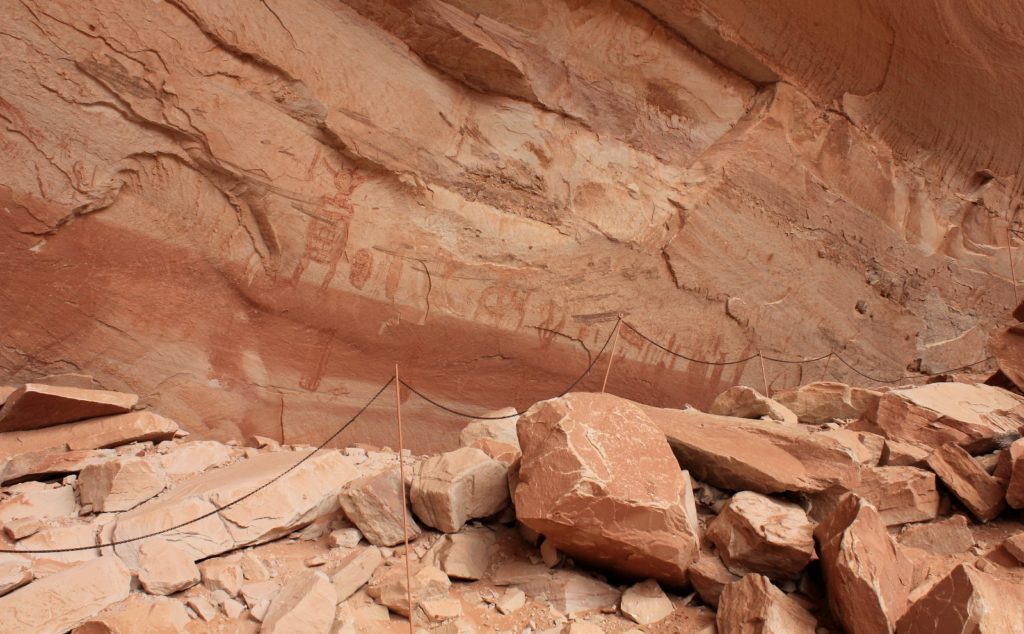
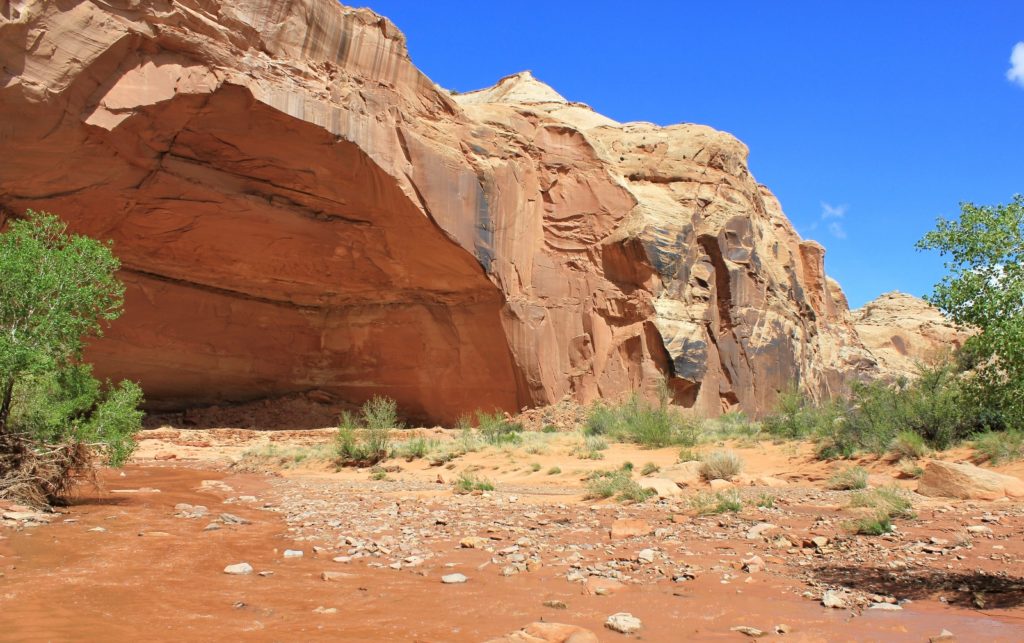
We knew about the dinosaur tracks up near the trailhead, but we had no idea we were going to see an inverted (raised UP) dino track down along the wash until Blaine stood next to it and pointed it out. How cool is that?!
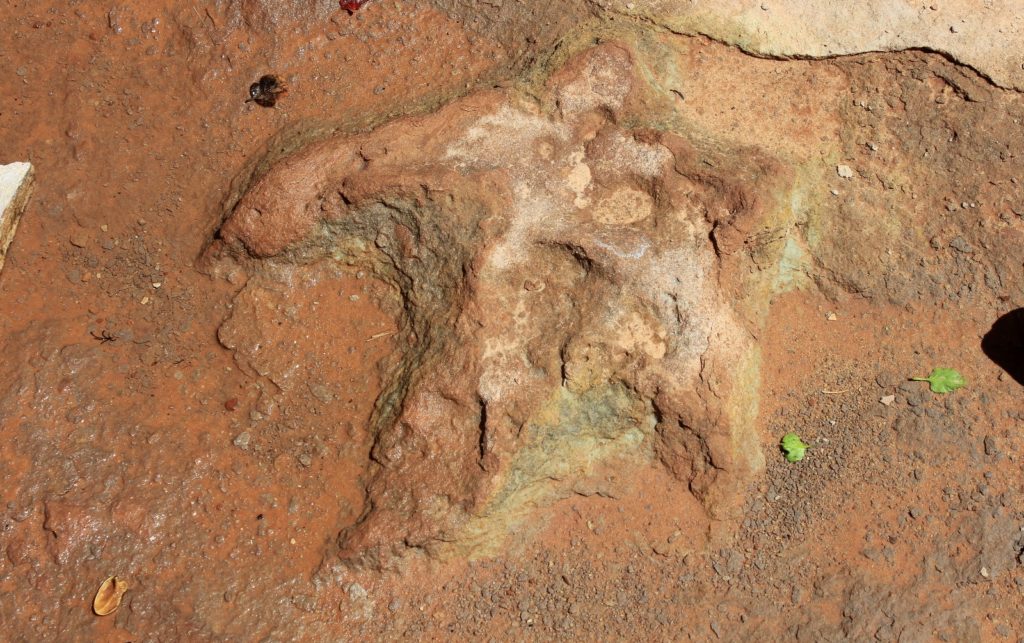
The Great Gallery is the last and best of the rock art panels in Horseshoe Canyon. After nearly 4 miles of hiking, we came around the corner and there was the 200 foot long panel framed by the trees.
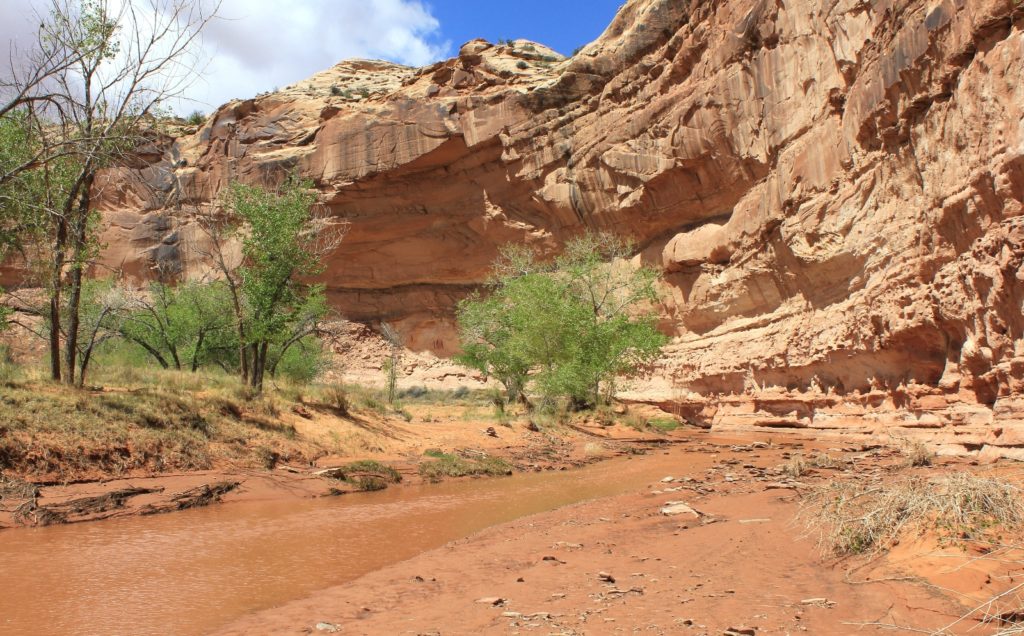
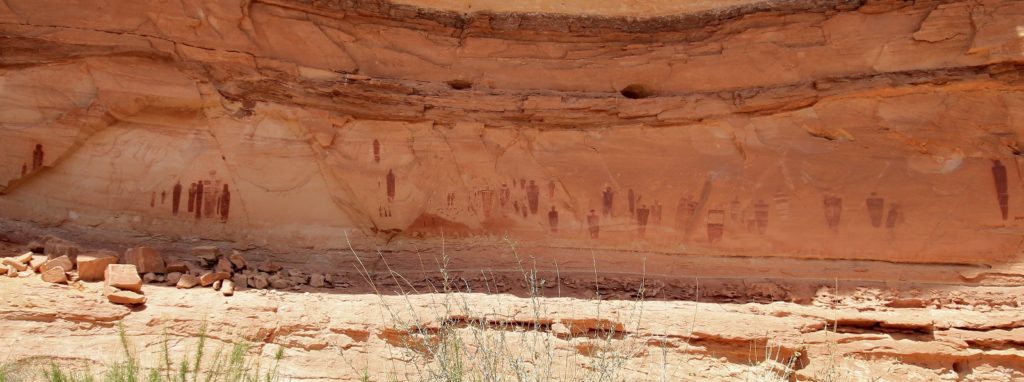
The Great Gallery is the crown jewel of Horseshoe Canyon. Many consider it one of the most impressive panels in the world. The well preserved site includes both pictographs (painted figures) and petroglyphs (figures etched in the rock) that date from 2,000 B.C. to 500 A.D. The life-size figures lack arms and legs but many contained intricate designs. From photos, you don’t get a true sense of just how massive or impressive the panel is. I had done a lot of research and seen a lot of photos of The Great Gallery, but nothing could have prepared me for what I saw.
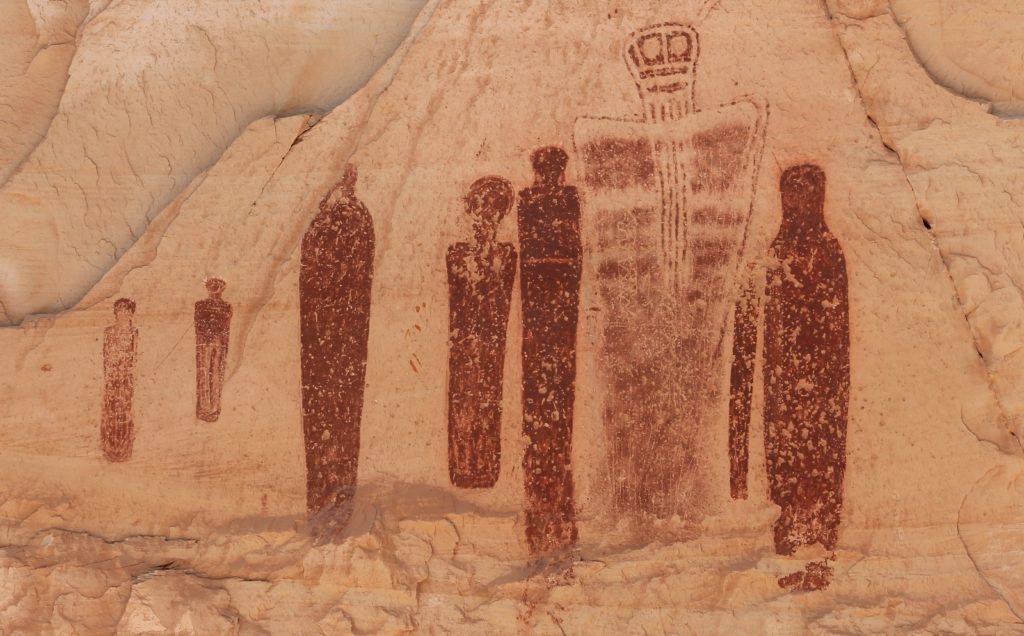

The details around and WITHIN each figure were amazing.
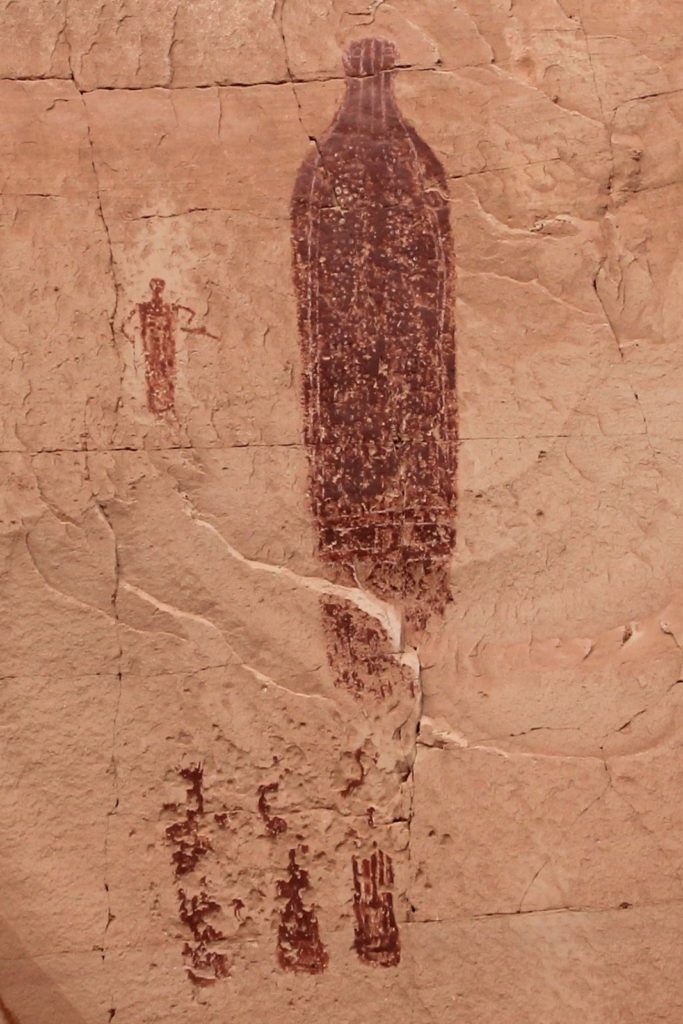
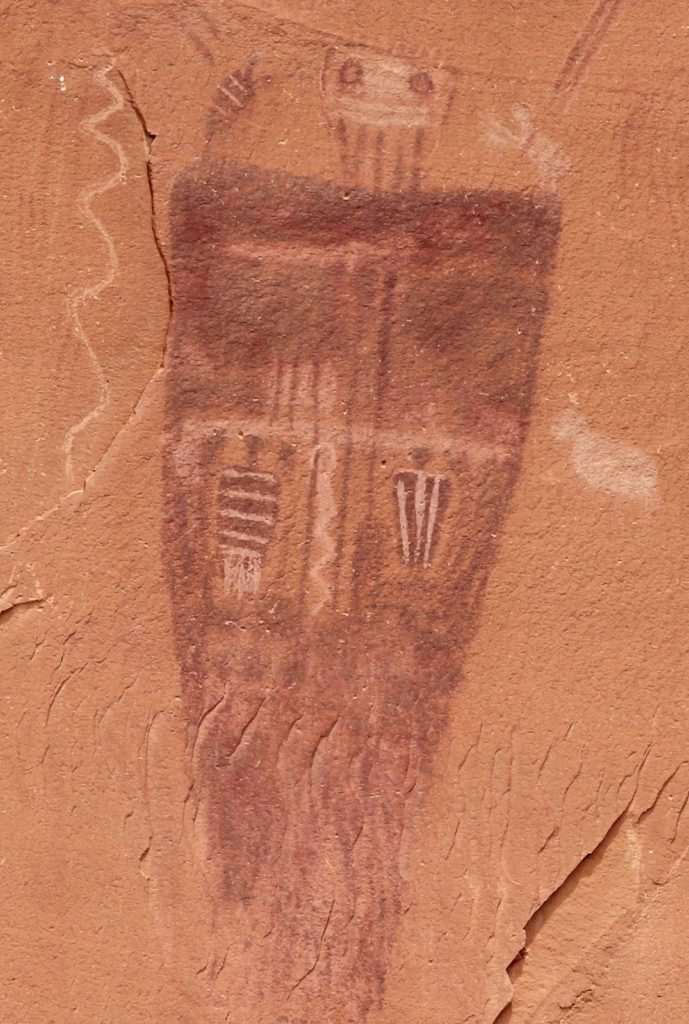
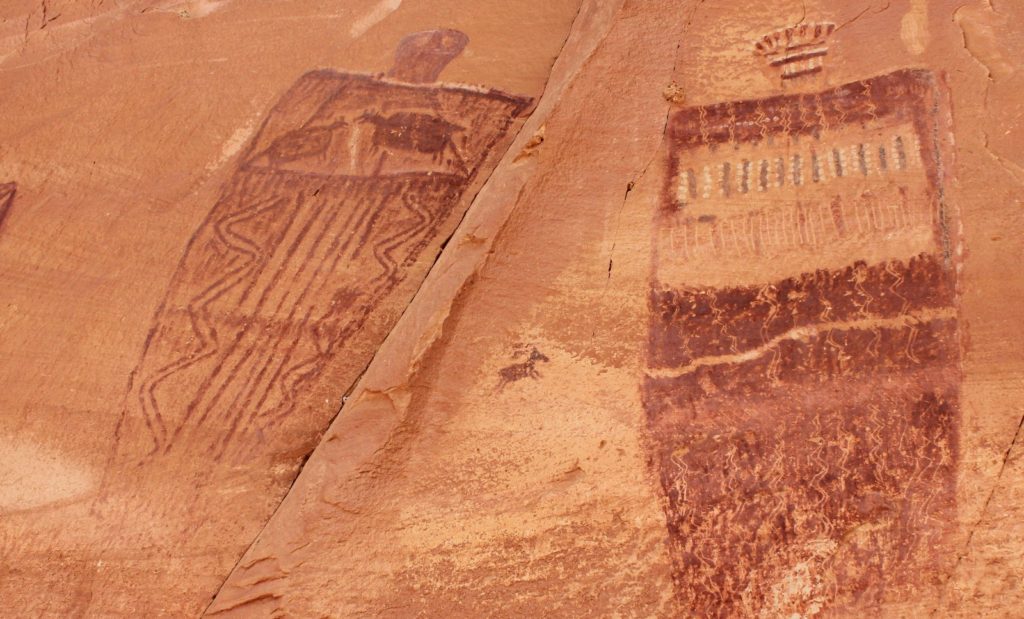
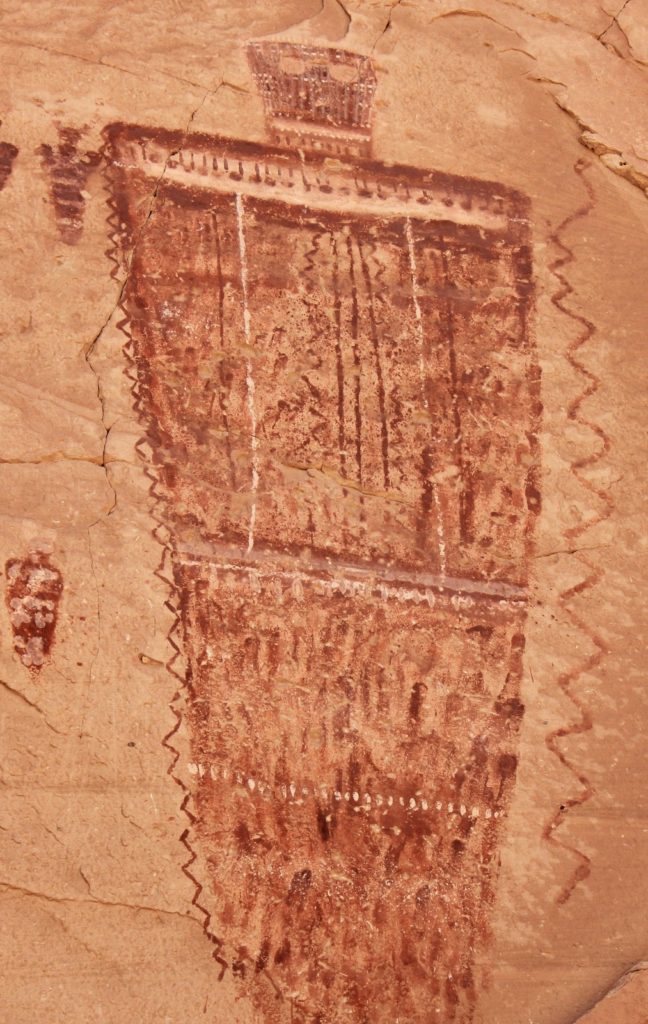
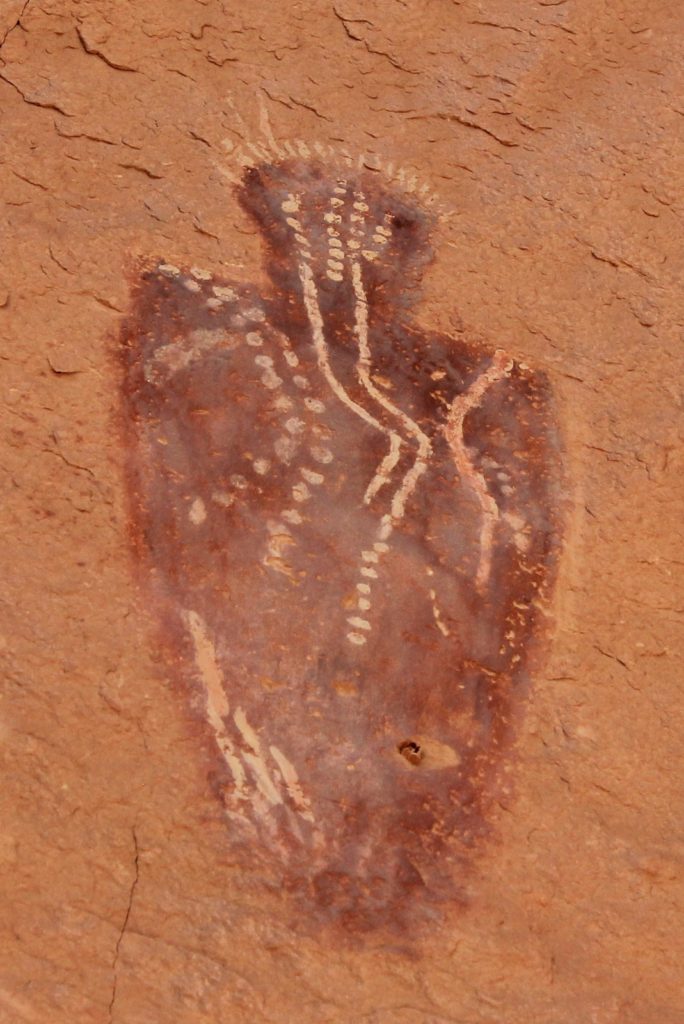
I hated to say goodbye to Horseshoe Canyon. It remains one of the most impressive historical sites we have visited. Meeting Blaine and Lynn was a stroke of good fortunate which added to our enjoyment of the canyon. I have no doubt that we will return again—perhaps in the fall so we can have the added beauty of the cottonwood trees sporting fall colors.
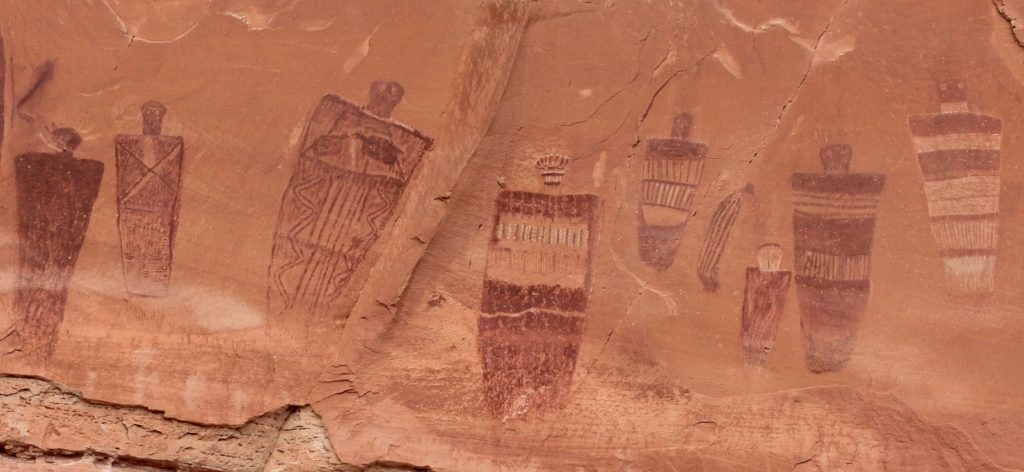
Directions to trailhead: from Green River travel west on I-70 to the junction with highway 24. Travel south toward Hanksville for about 25 miles to milepost 135.5. Turn left (east) and follow this dirt road for 24.5 miles to a junction with an information kiosk. Go left (east) for 5.1 miles to a side road on the right signed Horseshoe Canyon. Follow the side road 1.6 miles to the trailhead. Do not rely on your GPS to direct you to Horseshoe Canyon! Download the park map and be sure to call the park at (435) 259-2652 for current conditions before your trip. An AWD or 4WD high-clearance vehicle is advised, but many claim to reach the trailhead in a carefully driven car. Proceed with extreme caution if rain is in forecast. The road can become impassable when wet.
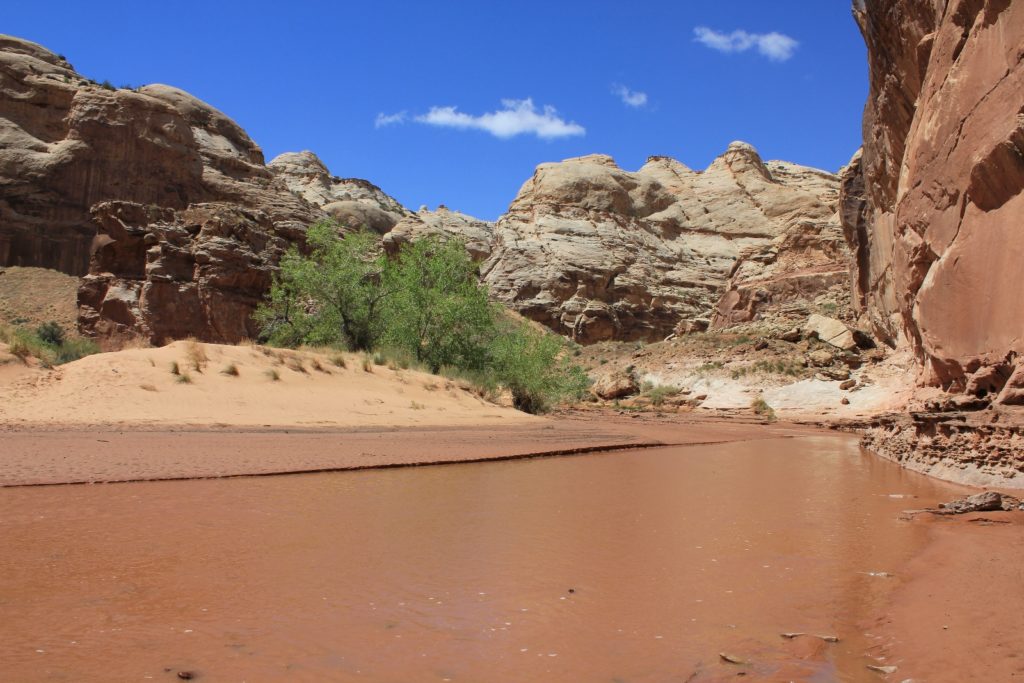
Got Gear?
Click here to see some of our tried and true gear. By accessing Amazon through the links on this page, you get the same GREAT Amazon pricing and they share a little with us. You don’t even have to purchase one of the linked items, simply access Amazon through our site and purchase anything! This helps us maintain Evans Outdoor Adventures and is much appreciated! Thank you to our supporters!